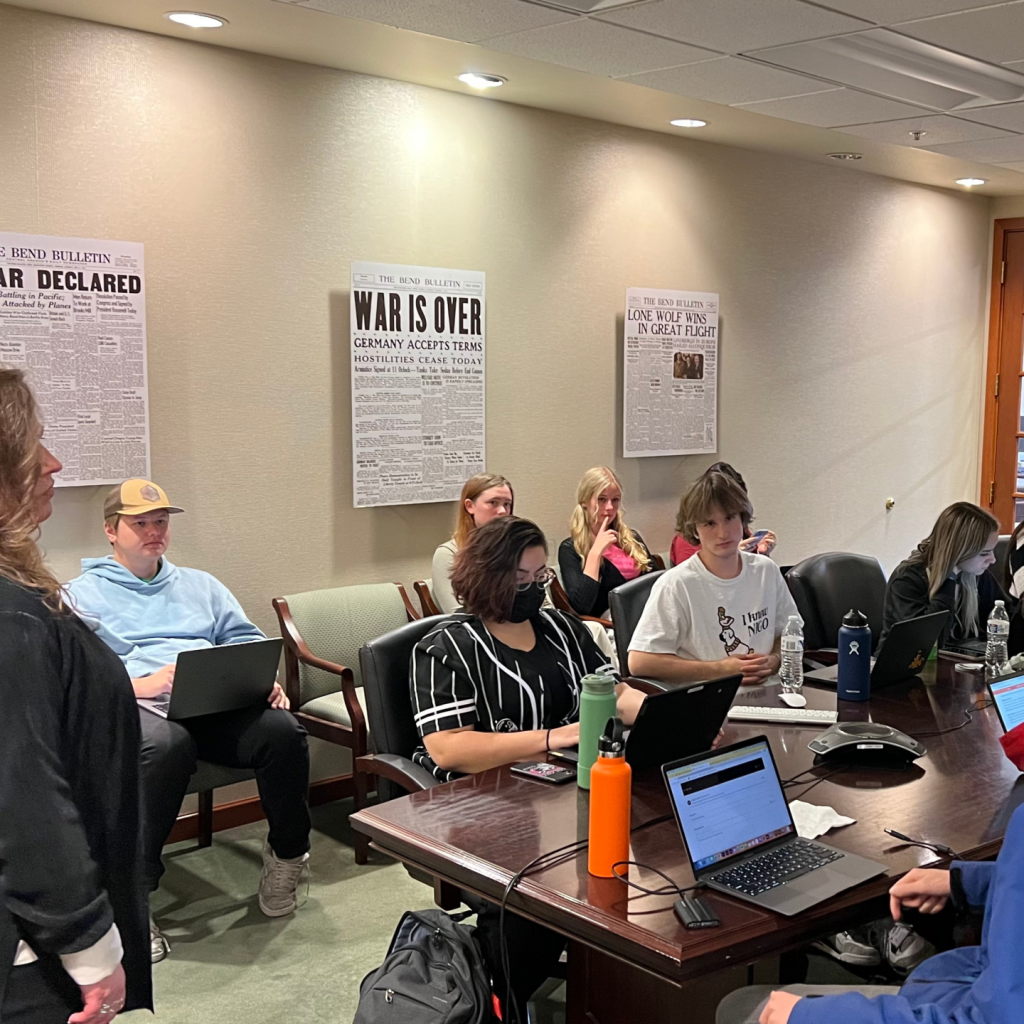Column: High school students create online news publication, learn news literacy
Published 3:45 am Tuesday, July 4, 2023

- Future Journalists of America interns meet at The Bulletin to learn about journalism and news literacy.
Wide-eyed, nervous and eager to learn, the aspiring journalists navigated to stately chairs in The Bulletin’s conference room.
Historic news pages mounted on the walls served as a backdrop for discussions about the First Amendment, how to combat misinformation and launching public records requests. Throughout their nine-month internship, the conversation shifted to inspired story ideas, insights for reaching younger audiences with local news, and the pursuit of truth.
Meet the first 16 Central Oregon high school students to participate in the Future Journalists of America™ program. The youth from Redmond, Madras, Bend and La Pine learned how to practice quality journalism in rural and metro newsrooms. They demonstrated a better understanding of media literacy by studying lessons provided by The News Literacy Project, a globally recognized curriculum; and designed and launched a digital publication where they’ve published dozens of stories and podcasts.
“I learned what it takes to be a reliable and credible journalist and how essential freedom of the press is to a free democracy,” said Steven Miller, an intern from La Pine High School.
The Bulletin hosted the grant- and donation-funded pilot created by the Fund for Oregon Rural Journalism, a nonprofit founded by EO Media Group in 2021. EO Media is also The Bulletin’s parent company. The nonprofit’s mission is to stem the decline in Oregon journalism through innovative programming and advocacy.
FORJ is focused on three core areas: recruiting and training fledgling journalists, assisting Oregon news outlets (except EO Media’s publications) with resourcing and implementing sustainable business models and developing collaborative community journalism content labs.
Future Journalists of America’s two-year program not only inspires youth to pursue a career in journalism, it’s also a path to increasing newsroom diversity and sharing skills for sustaining a digital publication. It demonstrates journalism is evolving to adapt to the digital age, not dying, and there are multiple paths to a career in journalism.
The results of the FJA program’s first year are promising: the three graduating seniors will study journalism in college, of the 16 students active in the program this year, four (25%) were students of color; and based on pre- and post-assessment results, the group improved their understanding of news literacy by 60 percentage points.
Grace Kelley, a Bend High junior, said the news literacy lessons showed her “how the news media is impacted by misinformation and how important it is that we fact-check and verify the news we consume.”
The regional youth digital publication, The Obsidian, was a vehicle for the youth voices throughout Central Oregon. The FJA interns collectively published about 40 stories, including news, features, sports and opinion articles.
“FJA has given me the opportunity to become a better journalist and to find self-expression while self-reflecting on the type of media I consume,” said Adri Jolie, a Summit High School student.
The students also produced 10 podcasts and a video story.
“Doing things like videos and social media are a good way to reach the younger audience,” said Liam Schmitt, an FJA intern. “We should use the internet and social media to promote what’s important to us.”
Interns had the opportunity to learn from professional journalists, university professors and community leaders. They also had leadership opportunities, provided public presentations about the importance of journalism and helped recruit fellow students into the journalism program.
“Both the FJA and the FORJ programs are inspired,” wrote Michele Clements, Bend-La Pine Schools’ second language arts coordinator, who assisted the nonprofit with scheduling short class presentations to talk about Future Journalists of America.
Reporters and editors at The Bulletin enjoyed interacting with the interns.
“It was a really good opportunity to understand journalism through youthful eyes,” said Anna Kaminski, The Bulletin’s city and county government reporter.
Kaminski and Bulletin Editor Gerry O’Brien said having the interns in the newsroom every week was great.
“It’s good energy,” O’Brien said. Not only did the high school students inspire story ideas, but their ease with technology was refreshing. “One of the things we’ve been trying to do is podcasting, and you guys just set one up and started running. You have that ‘just do it’ kind of attitude.”
Madras High School student Fatima Valdovinos spent part of her time working remotely and tuning into weekly sessions from the Madras Pioneer newspaper.
“I learned that because small newspapers don’t do as many stories as they used to, sources are excited to talk to you,” Valdovinos said.
A component of the Future Journalists of America program is to introduce rural interns to their local news outlets, so they can learn from those journalists and be inspired to return to their hometown small newsrooms.
“I went into FJA wanting to learn more about journalism and so far I have not been disappointed,” Valdovinos said. “I have learned so many new things. I could not be more grateful for what this program has taught me so far, and I am so excited to see what is next.”
If you’d like to learn more or donate to support the Fund for Oregon Rural Journalism, visit forjournalism.org




